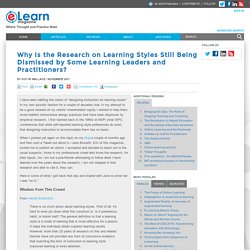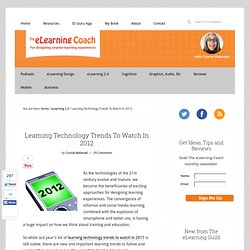

Great Resources for Teaching Using Comics. March , 2014 A few days ago I shared with you here in Educational Technology and Mobile Learning a list featuring some of the best web tools that you can use with your students to create comics.

As a teacher you can leverage the power of comics in several ways: you can use them for teaching writing, reading and speaking. Comics are also a good way for students to build and create their stories and share them with others. To help you better tap into the educational power of comics , I am sharing with you these two wonderful presentations where you will get to experiment with some new ideas of how to use comics in your instruction. The slides also feature a wide variety of web tools and iPad apps for creating comics. Have a look and let us know what you think of them.
Executive Leadership Coaching & Development. 2012Proceedings. The Flipped Classroom Model: A Full Picture. Due to Khan Academy’s popularity, the idea of the flipped classroom has gained press and credibility within education circles.

Briefly, the Flipped Classroom as described by Jonathan Martin is: Flip your instruction so that students watch and listen to your lectures… for homework, and then use your precious class-time for what previously, often, was done in homework: tackling difficult problems, working in groups, researching, collaborating, crafting and creating. Classrooms become laboratories or studios, and yet content delivery is preserved. Best Free Education Web Tool 2013. News. News Corp. Gets Into The Tablet Business With Amplify. Joel Klein, head of News Corporation's new Amplify education brand, announced today at the South By Southwest Education conference in Austin, Texas, that the company has designed its own branded Android tablet-sized computer.

It comes bundled with software designed for teachers and students. "The last thing we need is another pile of used laptops at the back of the classroom," Klein, former Chancellor of the New York City Public Schools, said on the call announcing the new integrated product line, dismissing the education "bells and whistles, gadgets and gizmos," that many teachers don't believe in or don't know how to use. This time, he says--wait for it! --is different. "This is a fully integrated teaching and learning solution. " The Amplify tablet comes preloaded with a whole mess of content--Google Apps for Education, Common Sense Media-rated audio, video, games, online textbooks, Merriam-Webster's Dictionary, and a graphing calculator. But that's not all.
Backchannel Learning in an Organizational Setting. About 15 years ago I was in a training class at my previous employer, and the person next to me was responding to emails on his Blackberry.

The trainer facilitating the session stopped her lecture mid-sentence and addressed my coworker. I distinctly remember the disdain in her voice as she said: "Please put your phone away, it's distracting you and the rest of the group from the learning. " My, how times have changed. Today it is commonplace to see people in a learning environment actively using their mobile phones.
The assumption can no longer be made that using the phone is linked to some sort of disengagement on the part of the learner; quite often it's exactly the opposite. Social media tools are rapidly changing the "rules" that have historically been applied to learning environments. Why Is the Research on Learning Styles Still Being Dismissed by Some Learning Leaders and Practitioners? I have been battling the notion of "designing instruction for learning styles" in my own quixotic fashion for a couple of decades now.

In my attempt to be a good steward of my clients' shareholders' equity I wished to help them avoid faddish instructional design practices that have been disproven by empirical research. I first learned back in the 1980s at NSPI (now ISPI) conferences that while self-reported learning style preferences do exist, that designing instruction to accommodate them has no basis. When I posted yet again on this topic on my blog a couple of months ago and then sent a Tweet out about it—Jane Bozarth, EIC of this magazine, invited me to publish an article. I accepted and decided to reach out to the usual suspects, those in my professional crowd who know the research, for their inputs. As I am but a practitioner attempting to follow what I have learned over the years about the research, I am not steeped in that research and able to cite it, they can.
From Richard E. 2012Proceedings. Learning Technology Trends To Watch In 2012. Sharebar As the technologies of the 21st century evolve and mature, we become the beneficiaries of exciting approaches for designing learning experiences.

The convergence of informal and social media learning, combined with the explosion of smartphone and tablet use, is having a huge impact on how we think about training and education. So while last year’s list of learning technology trends to watch in 2011 is still viable, there are new and important learning trends to follow and explore this year. Here are the ones that stand out to me (in alphabetical order). What stands out to you? Backchannel Several years ago, audience members at presentations and workshops began communicating with each other using their smartphones and laptops.